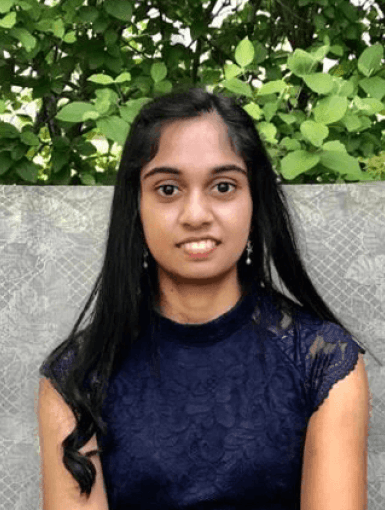
The following column is part of a new series: Do Good Student Voices.
In this series, students highlight topics they are passionate about and share what they are doing to ignite impact on campus and beyond. The series is a collection of students' stories, in their own voices, about their own experiences, inspirations, and actions for areas they care deeply about.
The following column was written by Sahithi Jarugula, a student in the iGive class. Sahithi is a freshman computer science major at the University of Maryland. She enjoys reading, writing, listening to music, and spending time with her friends and family. She loves to turn ideas into reality by creating programs. In the future, she hopes to combine this passion with another passion; helping people. Her dream is to build a career in which she can create programs to help improve people’s lives. For questions about the piece below, we encourage you to reach out to the author directly at sjarugul@terpmail.umd.edu.
Taking this iGIVE course has been an invaluable experience for me. Through this course, I was able to explore my interest in social good more deeply by learning about philanthropy and current social issues. I am excited to continue applying my knowledge about social good during the Spring 2022 iGIVE course and any other future endeavors I may take related to service.Sahithi Jarugula iGive student
When I first read my acceptance letter for University of Maryland, I remember my initial excitement fading into confusion and curiosity. That was because I had not only been accepted into the University, but I had also gotten the opportunity to join a program called Carillon Communities. As I researched more about this program, I found out that I could join a community called iGIVE and take a course about philanthropy. Throughout high school, I had learned how much I enjoyed participating in service activities, so the fact that I now had the perfect opportunity to continue this passion in college was very exciting for me.
iGIVE has taught me so much about how to engage in social good. During the first half of the semester, I had the wonderful pleasure of learning about the many layers of philanthropy. I learned that philanthropy can be effective or less effective and well-intentioned or ill-intentioned. For example, we studied how some corporations selectively donated money to nonprofits that did not support any movements or organizations that would get in the way of the success of the corporations’ business (Revolution Will Not Be Funded, Andrea Smith). Their selective behavior meant that they could maintain a level of control over the social issues receiving the most attention. Before the course, when I would hear about philanthropic acts on the news or in school, I never really thought too deeply about how much help these donations provided. We examined Oprah Winfrey’s Leadership Academy, a school built to educate young girls in Africa, and determine whether the model used for the school was well-intentioned or misguided. After studying various philanthropic acts and processes, I have developed the valuable skill of being able to properly analyze when the initial appeal of philanthropic acts are actually masking ineffective and ill-intentioned methods. Obtaining this skill has made me realize the importance of being fully aware of the needs of those you are helping and not letting other motives influence acts of philanthropy. In the future, I will view philanthropic acts with a more knowledgeable eye and commit and support the more effective ones because that is what those in need deserve.
During the second half of the semester, we were tasked with leading a grant process for a particular social issue our class wanted to address. After spending time researching issues including education inequality and climate change, my 43 classmates and I ended up focusing on mental health, which has been a rising problem due to the pandemic. We ended up coming to this decision because we believed that stigmatization around talk of mental health has become more exposed during the pandemic. We thought that though other social issues are equally important, mental health was the most urgent issue that we wished to address with our grant money because of current circumstances. After making this decision, we then needed to choose a nonprofit organization that addresses this issue to receive a $7,500 grant. This meant using all of the things we learned about philanthropy during the first half of the course to make the most of our philanthropic money.
As a class, we developed grant selection criteria focusing on organizations that were sustainable and working to destigmatize discussions surrounding mental health. In other words, we were looking for organizations that would have a long-term or more permanent impact on mental health awareness and services.
Choosing a recipient for our grant was a long but rewarding process. We developed a mission statement to lead us through the process: Our mission is to invest our resources into programs that work to destigmatize mental health, provide mental health services, or increase access to affordable and quality mental health services in their community. Each student searched for organizations matching our mission in Prince George’s County and nearby locations and asked them to apply for our request for proposal. We contacted more than a hundred organizations, and thanks to our hard work, we received 27 applications. We were very grateful for all of the responses. While reviewing the applications, a lot of us were deeply touched by the programs that already existed in our community, such as aid for domestic violence victims and children impacted by cancer. I was glad to have been able to learn about all the great organizations that help victims of mental health in the community. After long discussions and multiple rounds of review, we voted to choose the organization that we thought could do the most good. Particularly, we looked for organizations that were raising awareness and focusing their efforts on marginalized groups, such as the BIPOC and LGBTQ+ communities.
In the end, we selected the Adolescent Self Injury Foundation (ASIF) as our grant recipient and even called them during class to share the news. Hearing the founder of the organizations’ reaction to the news was a priceless experience. Currently, ASIF works to help and educate youth who have fallen victim to self-injury. The organization will be using the grant money to launch a social media campaign educating on the issue of self-injury. This entire process was extensive, emphasizing the lesson I learned that philanthropy had many layers, but also just as rewarding because we were doing real physical work to help people.
Taking this iGIVE course has been an invaluable experience for me. Through this course, I was able to explore my interest in social good more deeply by learning about philanthropy and current social issues. I am excited to continue applying my knowledge about social good during the Spring 2022 iGIVE course and any other future endeavors I may take related to service.

